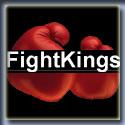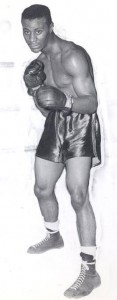


March 24, 2016
The Mouthpiece
By: George H. Hanson Jr., Esq.
When someone dies it reminds us of our own mortality. Funerals are always emotional endeavors forcing me to reflect on death, dying, and all my family and friends who now reside in the upper room. Driving to Dorsey Lay’s memorial service, I was somewhat relieved that I was drawn out of my sepulcher of sadness when I turned on the radio—Boom 107.9 FM—and Eve with youthful exuberance blasted “Who’s that girl?” on the first track from her second album Scorpion released in 2001. It was a well-needed respite from my deep reflection.
 On Tuesday, Hall of Fame Promoter – J. Russell Peltz posted on Facebook: “The last man standing from the 1940s of Philly boxing, one of our city’s greatest decades, passed away at the age of 91. He was a wonderful man and a great ambassador to boxing and he will be sorely missed.”
On Tuesday, Hall of Fame Promoter – J. Russell Peltz posted on Facebook: “The last man standing from the 1940s of Philly boxing, one of our city’s greatest decades, passed away at the age of 91. He was a wonderful man and a great ambassador to boxing and he will be sorely missed.”
Life handed Dorsey Lay sour lemons and he made delicious lemonade—captivating everyone with his quickness, speed and boxing acumen—earning the moniker Rabbit—getting inducted into the Pennsylvania Boxing Hall of Fame in 2012. Born on the last day of December in 1924 in La Grange, Georgia, the Philly legend transitioned to the squared circle in the sky last Thursday—the 30th anniversary of the tragic death of another of the City’s boxing greats – James “Black Gold” Shuler.
Lay never met his father and relocated to Philadelphia with his mother and older sister Elizabeth when he was three years-old. As a youngster, his mother could no longer care for him and sent him to a boarding school – The Pomeroy School for Boys – in Pomeroy, Pennsylvania. According to Lay’s son, Dorsey Lay Jr. – it was more like a prison but his father never complained and became interested in the sweet science – boxing. The young boxer had success as an amateur pugilist taking second place at the1941 Mid-Atlantic AAU tournament, representing the Pomeroy School for Boys.
Amidst the thirty people – family and friends – gathered in Kent Funeral Home at 6506 Haverford Avenue – John DiSanto and I listened as the Reverend Evelyn Clark eulogized the beloved fighter. “Many times we live in the presence of legends and we don’t know it. Dorsey Lay grew up without his sister and learned how to fight. He doesn’t have to fight anymore.”
Growing up I heard so many stories about Dorsey Lay from his childhood friend the late Raymond Munson that I felt that I “knew” him before I met him. A fixture at Shepard Recreation Center where I trained as an amateur, Munson never missed an opportunity to talk about his friend’s fistic fury. If you knew Mr. Munson – Sonny Liston’s assistant and confidant – you “knew” Dorsey Lay. And you knew not to say anything negative about his favorite fighters – Joe Louis, Sonny Liston, Hughie “Buttons” Kearney, William “The Gladiator” Gibb and Dorsey Lay. The old man who passed in 2010 was convinced that his pal was one of the best fighters Philadelphia produced. Munson had a deep respect and appreciation for Lay.
“Life is often a fight from the time we wake up to time we lay down at night, there are many challenges – stated Reverend Clark – gaining momentum delivering a message touching the hearts and minds paying homage to the man who seemed like he was listening attentively in his coffin draped in the American flag.
Lay was a Phenom who joined the punch for pay ranks a month before his 18th birthday (November 19, 1942) and after 28 months – his 30th fight (24 wins – 4 losses – 1 draw -10 kos) – was against future lightweight champion Ike Williams (62 wins – 7 losses – 1 draw – 31 kos) in a ten rounder on March 26, 1945. Williams stopped him in the third round and unbeknownst to anyone—Lay had glaucoma. He would continue fighting, hanging up his gloves on September 8, 1948 compiling a record of (40 wins – 18 losses – 1 draw – 15 kos) almost half of his fights being contested with two bad eyes. He would eventually go blind— total darkness—for the past forty years.
“Lay had a tenacious spirit – a never give up attitude – the type of spirit we need” added Reverend Clark. And according to his son, the elder Lay never allowed his disability to damper his spirits. He knew every house in the neighborhood and had an iron-clad memory.
The program placed a two-minute time limit on each speaker and it was only fitting that DiSanto – the griot of Philly boxing with his website www.phillyboxinghistory.com – spoke about Lay, his accomplishments including induction into the Pennsylvania Boxing Hall of Fame in 2012. Like all of the Philly greats – Dorsey Lay lives forever on the website. After DiSanto I took my place at the mike. Brevity has never been my forte. Thus, I exceeded the two-minute time limit sharing the impact that Lay had on me as young amateur. Dorsey Lay was simply one of the best and an inspiration.
“We don’t die. We go from life to life eternal. There is no more fighting.” Dorsey Lay will live forever in our hearts, in our minds, in our stories engrained in the rich boxing fabric of our beloved city – The Capital of Boxing.
Rest in peace, Champ. Say hello to Joe Louis, Sonny Liston and Mr. Munson. You will always be our hero.
Continue to support the sweet science, and remember, always carry your mouthpiece!
enondbnd